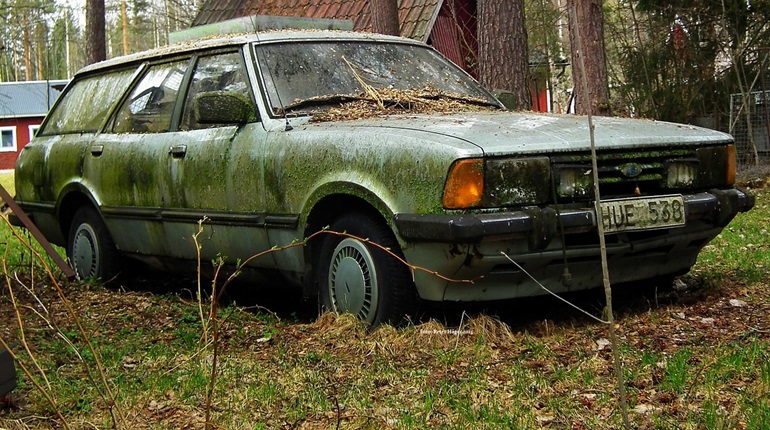As winter unfurls its cloak of snow and ice across the roads, it brings the daunting challenges of navigating through reduced visibility and slippery surfaces. These conditions not only test your driving skills but also the mettle of your vehicle.
Consequently, selecting a car equipped to handle winter’s wrath is crucial for ensuring your safety and performance on treacherous roads. This article will help you understand the features of winter-ready vehicles and highlight the top makes for conquering snowy landscapes.
Table of contents
Key Features of Winter-Ready Vehicles
The features that make a car ideal for winter city tours and short trips in areas with light snowfall differ significantly from the requirements for snow plow drivers. They require trucks with robust engines capable of high towing capacities and exceptional durability to withstand the rigors of clearing snow and ice over extended periods.
Consequently, we’ll focus on features you’d need for a winter family tour or light commercial transportation.
All-wheel drive (AWD)
All-wheel drive systems deliver power to the front and rear wheels, improving traction and control in slippery conditions. This feature is invaluable for maintaining stability on icy roads, as it can dynamically allocate power to the wheels with the most grip, reducing the risk of skidding.
Winter Tyres
Winter tires perform in cold, snowy, and icy conditions. They have a softer rubber compound that remains flexible in low temperatures, providing a better grip than standard tires. The tread patterns are also more pronounced, allowing for efficient snow and water displacement.
Anti-Lock Braking System (ABS)
The anti-lock braking system prevents the wheels from locking up during emergency braking, enabling the driver to maintain steering control. ABS is particularly beneficial on icy surfaces, where tire grip is limited, allowing for safer stopping distances.
Heated Features
Heated features, such as mirrors, windscreen, and seats, contribute significantly to comfort and safety during winter. Heated mirrors and windscreens improve visibility by preventing ice and snow accumulation, while heated seats enhance comfort during cold drives.
Ground Clearance
Vehicles with higher ground clearance can navigate snowy roads more effectively, reducing the risk of snow accumulation underneath the chassis, which can lead to loss of control. This feature is vital in places with heavy snowfall or roads less likely to be cleared promptly.
Weight Distribution
Proper weight distribution enhances vehicle stability by improving grip on icy or snowy surfaces. Vehicles with a balanced weight distribution between the front and rear axles offer better handling and traction. These features collectively contribute to a vehicle’s ability to navigate winter roads safely and efficiently.
Top Vehicles for Snowy Driving
As you read on, you’ll discover vehicles that excel in tackling the challenges of winter driving and align with the essential maintenance and driving tips for optimal performance in cold weather.
Compact SUVs
Their design combines the agility of smaller vehicles with the robustness required for snowy and icy roads. You’ll find that their elevated ground clearance offers a significant advantage, allowing for better navigation through snow without compromising the vehicle’s stability. Additionally, many compact SUVs come equipped with all-wheel drive (AWD) as a standard or optional feature, providing improved traction and control on slippery surfaces.
Another benefit you’ll appreciate is the modern safety technologies integrated into compact SUVs. Features like anti-lock braking systems (ABS), electronic stability control (ESC), and advanced driver-assistance systems (ADAS) work in tandem to ensure your safety, enhancing your vehicle’s responsiveness to adverse conditions.
With ample room for passengers and cargo, you can easily carry all your winter gear, making these vehicles practical for daily commutes and winter adventures.
When considering a compact SUV, consider models renowned for their reliability and performance in cold weather. For example, you can compare the Volvo XC40, Subaru Forester, and Mazda CX-5.
Midsize and Full-Size SUVs
These SUVs provide superior ground clearance and robust all-wheel or four-wheel drive systems, ensuring optimal traction and stability on snow-covered and icy roads. In addition, the added weight and size contribute to a more secure driving experience during adverse weather conditions.
Midsize SUVs like the Land Rover Discovery and Toyota Highlander receive praise for their blend of comfort, capability, and technology. They offer spacious interiors and advanced safety features such as adaptive headlights and emergency braking systems, which are indispensable for winter driving.
Full-size SUVs, including the Volvo XC90 and Ford Expedition, stand out for their extensive cabin space and towing capacity, making them perfect for family adventures and heavy cargo, even in challenging weather. Their sophisticated all-wheel drive systems and heated comfort features ensure a safe and warm journey, regardless of outside conditions.
Pickup Trucks
Their powerful engines and robust build provide the strength to navigate snowy and icy roads. Many models come equipped with four-wheel drive (4WD) systems, enabling better traction and control when driving on slippery surfaces. This feature is crucial for maintaining stability and safety during winter months.
Models such as the Ford Ranger, Toyota Hilux, and Nissan Navara stand out for their reliability and performance in cold weather. These trucks offer a balance of power, durability, and advanced safety features, including electronic stability control and traction control systems.
Moreover, the spacious cargo bed allows you to transport snow removal equipment, winter sports gear, or emergency supplies, making these vehicles incredibly useful for work and leisure during the winter season.
Electric Vehicles (EVs) and Hybrids
One notable aspect of EVs and Hybrids is their low center of gravity, owing to the battery placement. This design enhances stability and handling on slippery roads, providing you with greater control. Additionally, the instant torque available in electric and hybrid vehicles allows for precise acceleration with minimal wheel spin in snow or ice.
Manufacturers like Tesla, Nissan Leaf, and Toyota Prius have made significant strides in adapting their EVs and Hybrids for colder climates. These vehicles now come with features such as battery thermal management systems to maintain optimal battery performance in low temperatures and pre-conditioning systems that allow you to warm the car up and defrost windows via a smartphone app.
In addition, many EVs and Hybrids offer all-wheel drive options, further enhancing their winter capabilities. However, cold weather can reduce the range of electric vehicles, so planning for more frequent charging is prudent during winter months.
Conclusion
Select the right vehicle to ensure safety and enhance your experience on snow-covered and icy roads. As such, prioritize vehicles with essential safety features such as all-wheel drive, anti-lock braking systems, and advanced driver-assistance technologies.
Equally important is the commitment to regular maintenance, including checking tire pressure and ensuring your lights and heating system are in optimal condition.
On top of that, adopt prudent winter driving practices — such as adjusting your speed to match road conditions, maintaining a safe distance from other vehicles, and understanding how to react if your vehicle skids.








